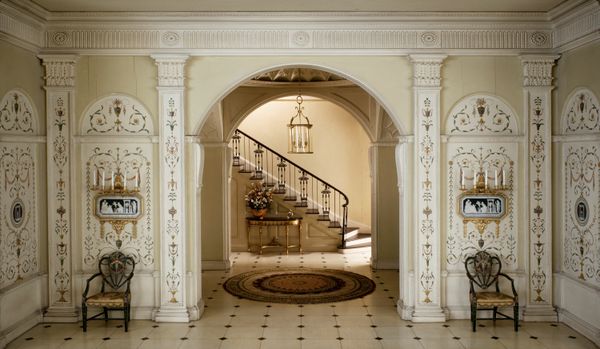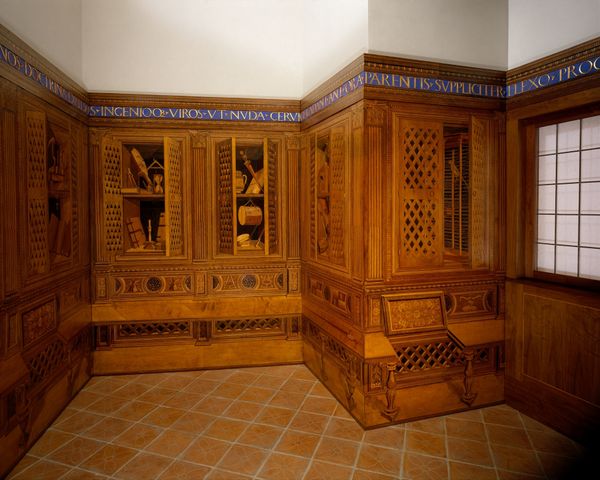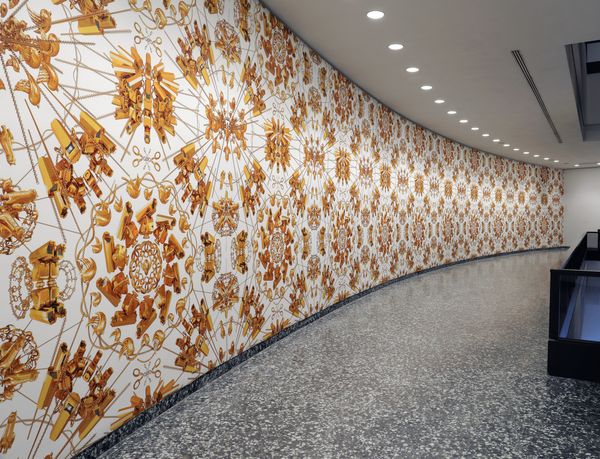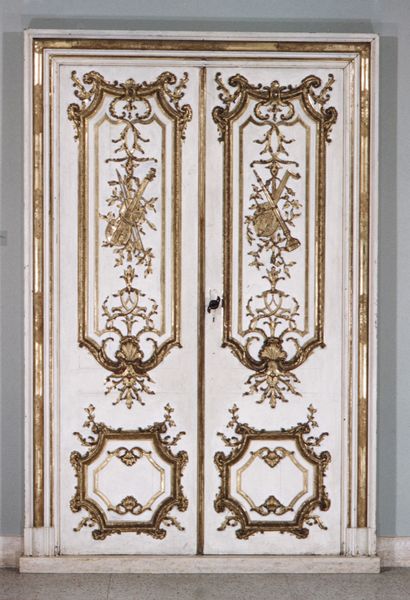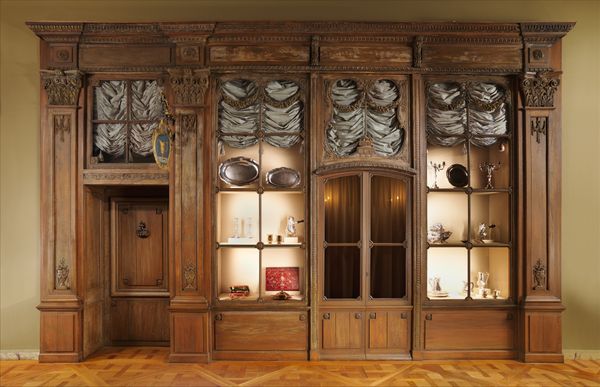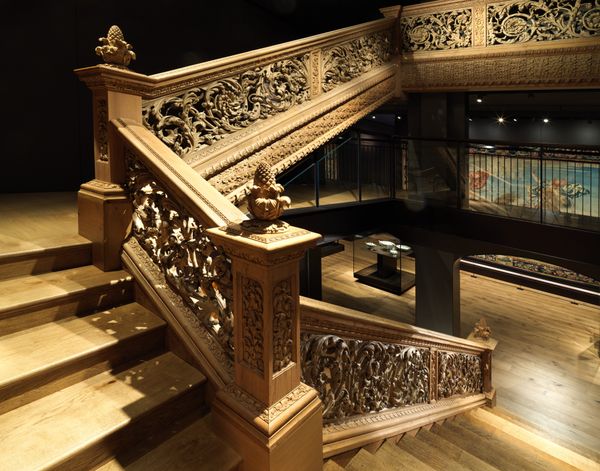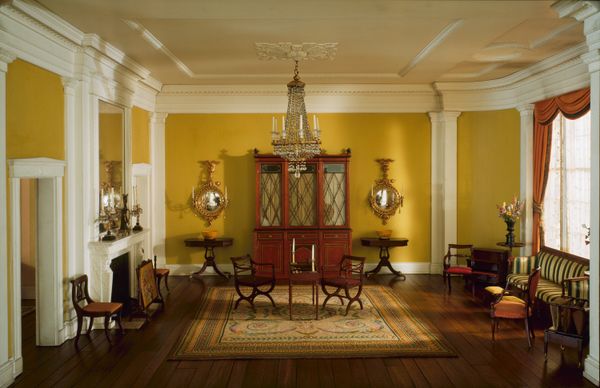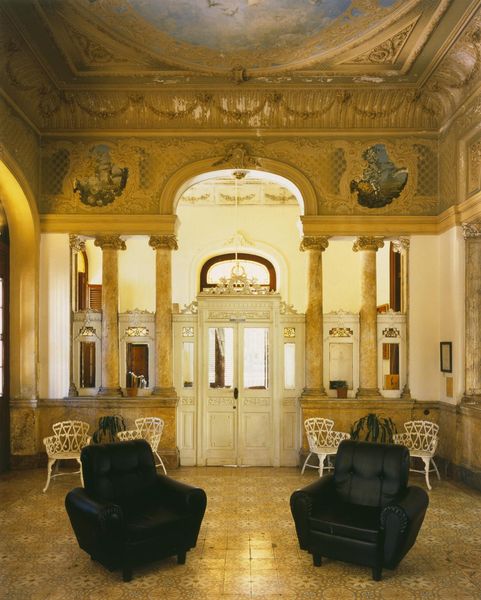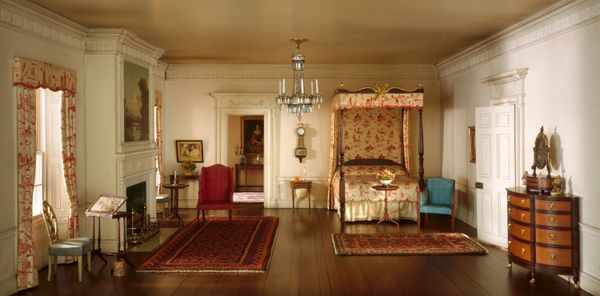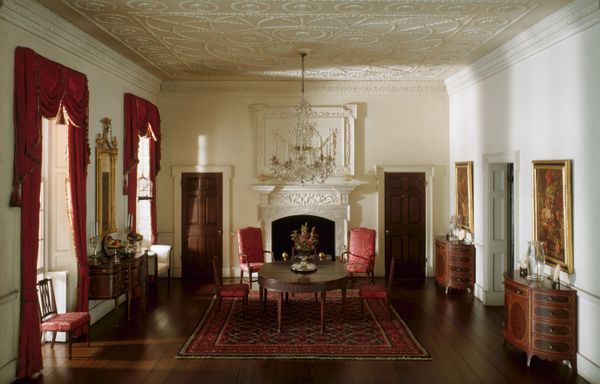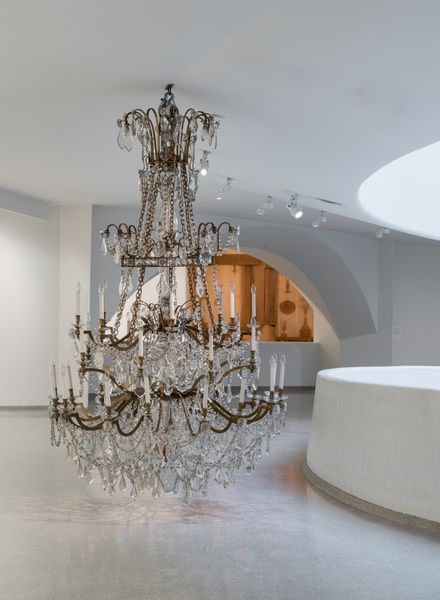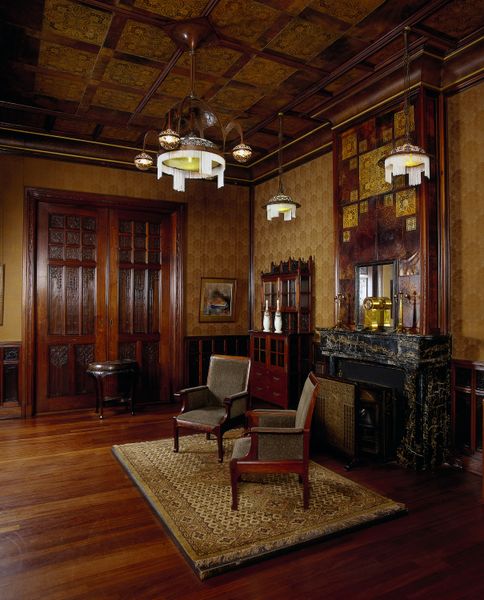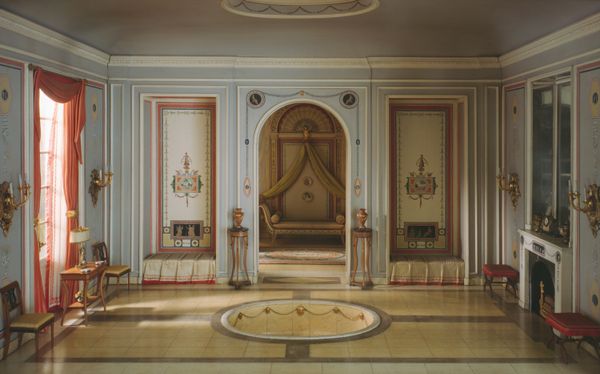
metal, architecture
#
art-nouveau
#
metal
#
geometric
#
decorative-art
#
architecture
Dimensions: 118 x 67 in. (299.72 x 170.18 cm) (approx. overall)
Copyright: Public Domain
Curator: The rhythmic intricacies and lavish ornamentation of this "Pair of Elevator Grilles" stop me in my tracks. Crafted circa 1893-1894 by Louis Henri Sullivan, they're a wonderful expression of the Art Nouveau movement. What’s your first impression? Editor: Restrained elegance. The ironwork seems to whisper rather than shout, and I am seeing sun patterns filtered through trees. A kind of stylized Eden before the Fall. Curator: That’s beautifully put. These elevator grilles demonstrate Sullivan’s commitment to integrating architecture with organic, naturalistic design. We need to remember that this ethos emerged during an era when urban spaces were dramatically transforming, and they mark the embrace of technologies like elevators that reshaped public space. Editor: Yes, this piece manages to elevate--if you'll pardon the pun--an utterly mundane architectural feature to something sublime. Each circle, each curve seems pregnant with meaning. Do you think the circular motif represents cycles of life? Curator: Certainly. And they exemplify how Sullivan wanted architecture to express a broader philosophy. This era was grappling with identity, and Sullivan embraced symbolism to foster public engagement and convey profound meaning. It should be noted he considered himself to be “an architecture evangelist." Editor: The visual language resonates deeply. Those little details draw one into a sort of symbolic world: nature, spirit, geometry--it's all here. There's a harmonious sense that human innovation can enhance experience instead of alienating us from nature. Curator: Yes, an integration of natural and urban identity was Sullivan's objective! Looking at these grilles, it’s as if Sullivan was inviting people into a modern, yet grounded space. He was not alone; he was influenced by figures such as Emerson and Whitman. They sought an architecture appropriate to American Democracy, but did so using both classical and modern designs. Editor: This piece almost functions as a mnemonic device, helping us to recall our cultural values. And it’s particularly meaningful that the museum setting creates another level of discourse about preservation, context, and access. These “elevator grilles” suggest something deeper at work here. Curator: Indeed. They connect our past with the future. Editor: I wholeheartedly agree. Thanks for highlighting the cultural value that Sullivan infused into metal.
Comments
minneapolisinstituteofart almost 2 years ago
⋮
The Chicago Stock Exchange Building, for which these grilles were made, was one of Adler and Sullivan's last commissions before the firm dissolved in 1895. The repeating motif of spheres on the arms of an X within ovals inside a circle is echoed in the frieze above the grille and in the overgrille. Sullivan conceived this design as a series of "seed germs" bursting from their pods, an idea found in his prose poem "Inspiration" of 1886, in which he compared the metamorphosis of a seed into a plant to that of basic forms into a structure.
Join the conversation
Join millions of artists and users on Artera today and experience the ultimate creative platform.
